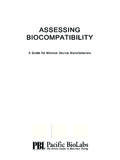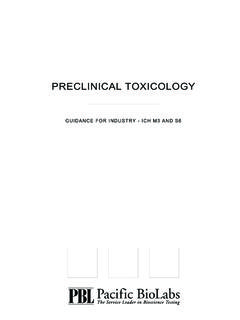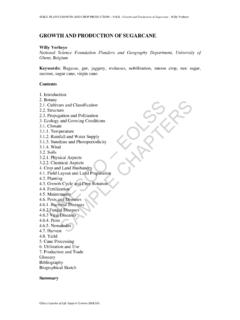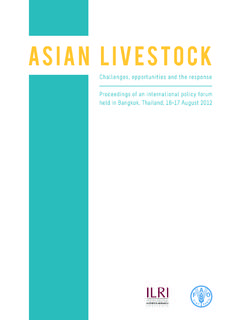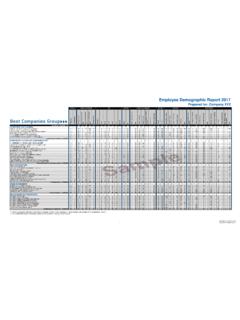Transcription of To view this booklet online, please visit PacificBioLabs
1 To view this booklet online, please visit Preclinical Toxicology Points To Consider in Program Design Page 1 pacific BIOLABS YOUR PARTNER FOR PRECLINICAL SAFETY TESTING As The Service Leader in Bioscience Testing, pacific BioLabs (PBL) strives to help our clients deliver safe and effective pharmaceuticals to the patients who need them. Well designed and executed preclinical studies are critical to the success of any drug development program. They must reliably assess the safety of a new drug entity, laying the groundwork for clinical trials and ultimately, regulatory approval. pacific BioLabs interacts closely with our clients, providing quality nonclinical testing results to meet regulatory requirements and guide your drug development decisions.
2 As part of our commitment to clients, we have prepared a pair of publications that will assist you in planning your preclinical testing program. This publication, Preclinical Toxicology Points to Consider in Program Design, gives an overview of the drug development process, describes the contents of a typical Common Technical Document, shows the relative timing of various studies required for a successful IND and NDA, and presents advice on selecting and working with contract toxicology labs and other CROs. PBL s companion publication, Preclinical Toxicology Guidance for Industry ICH Guidances, is available on our website at It presents two major ICH guidance documents that directly address safety testing of new pharmaceuticals: Guidance M3 Nonclincal Safety Studies for the Conduct of Human Clinical Trials for Pharmaceutical and Guidance S6 Preclinical Safety Evaluation of Biotechnology-Derived Pharmaceuticals.
3 The FDA website contains these two documents along with a variety of other references on regulatory expectations for the nonclinical development of NCEs. Topics include various aspects of safety ( reproductive, carcinogenicity and genotoxicity), ADME ( bioanalytical, pharmacokinetics and toxicokinetics), and safety pharmacology. We hope you find these resources useful, and we wish you the best in your continuing quest to develop safe and effective new medicines. Tom Spalding President pacific BioLabs pacific BioLabs The Service Leader in Bioscience Testing Page 2 PRECLINICAL TOXICOLOGY POINTS TO CONSIDER IN PROGRAM DESIGN TABLE OF CONTENTSI ntroduction.
4 3 Phases of a Drug Development Program .. 4 Discovery .. 4 Preclinical Development .. 4 Clinical Development .. 5 Marketed Drug/Postmarketing Studies .. 5 Content of the New Drug Application (NDA) .. 6 Sample Timeline for Preclinical Studies .. 7 Drug Development 8 - 9 Regulatory 9 Code of Federal Regulations (CFR) Title 21 .. 10 Good Laboratory Practice (GLP) .. 10 Good Manufacturing Practice (GMP), Current Good Manufacturing Practice (cGMP) .. 10 Investigational New Drug (IND) 10 10 NIH and AAALAC .. 10 Select Sources and 11 Management of Preclinical Outsourcing .. 12 Benefits of Outsourcing .. 12 Selecting a Contract Research Organization (CRO).
5 12 General Timeline for Conduct of a Nonclinical Safety Sutdy .. 13 The pacific Biolabs Advantage .. 15 Contact Information .. 17 Preclinical Toxicology Points To Consider in Program Design Page 3 INTRODUCTION Drug development is a high-risk enterprise. The typical new drug takes 10-12 years to get to market and costs up to $500 million. Pharmaceutical companies face continually increasing challenges in drug development shorter product life cycles, global competition, as well as daunting technical and regulatory hurdles. Meanwhile, as a result of the Human Genome Project and high throughput drug development methods, there are many more drug candidates to test.
6 Thus, there is growing pressure on pharmaceutical and biopharmaceutical companies to be efficient in their drug discovery and development programs. Roughly 80% of candidate drugs will fail during the preclinical phase of their development. A well thought out nonclinical pharmacology/ toxicology program is critical for the long-term effectiveness of a drug development effort. Because they help drug developers avoid clinical trials that are destined to fail, nonclinical studies can be a major tool for reducing drug development costs. pacific BioLabs The Service Leader in Bioscience Testing Page 4 PHASES OF A DRUG DEVELOPMENT PROGRAM Drug development is often divided into the following phases: Discovery, Preclinical Development, Clinical Development, and Marketed Drug/Post-Marketing studies.
7 These are somewhat arbitrary delineations of a complex process that must include a significant amount of flexibility if it is to succeed. A brief description of these phases and some of the nonclinical activities associated with them follows. The process of drug development has several well-defined benchmarks, including selection of a lead candidate, preparation of an IND (or similar document) that supports first-in-human dosing, and preparation of an NDA (or similar document) that supports marketing of a new drug. At the end of this discussion is included an overall summary of the timing for the nonclinical ADME, Safety Pharmacology and Toxicology studies typically associated with each of these benchmarks.
8 DISCOVERY Discovery often begins with target identification choosing a biochemical mechanism involved in a disease condition. Drug candidates are then tested for their interaction with the drug target. Screening for target interactions, which can include functional genomics and/or proteomics, can result in a significant number of molecules under test. Modern high-throughput screening methods can evaluate tens to hundred of thousands of compounds for interaction with a single disease target. Once an interaction with a target is identified, the target is typically validated by checking for in vivo activity versus the disease condition for which the drug is being developed.
9 Candidate lead selection from amongst these thousands of molecules is often based on strength of interaction with the molecular target, IC50 or Ki. However, compound characteristics that affect subsequent ease of development can also be used to select lead compounds. These include factors such as solubility, chemical stability, ease and cost of manufacture, ease of formulation, etc. Preclinical development characteristics that can be used in the lead selection process include permeability ( Caco-2), metabolic stability ( microsomal or hepatocyte), exposure ( bioavailability), potential drug-drug interactions ( cytochrome P450 screens), and initial toxicology screens ( cytotoxicity, genetic toxicity, in vivo toxicity, etc.)
10 All screening procedures should be evaluated in light of the intended use of a compound in the clinic. For example, is a short or long half-life drug desired, is a wide distribution or restricted distribution (throughout the body) required, etc. PRECLINICAL DEVELOPMENT The focus of Preclinical Development activities in the drug development process is two-fold. Lead compounds (typically a handful) are evaluated for their drugability characteristics, the likelihood that they will be successful drugs. The list of drug-like factors that can be applied to selection of one or several potential drug candidates is quite long. It can include factors that determine exposure (solubility, metabolic stability, absorption, bioavailability, half-life), toxicity (formation of reactive metabolites, effects on target organs, potential drug-drug interactions) and ease of manufacture and formulation (chemical stability, solubility, polymorph form).
